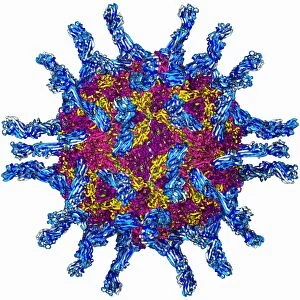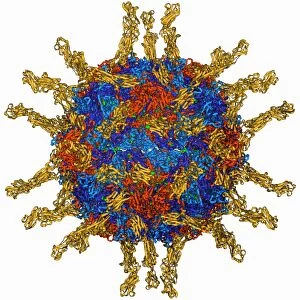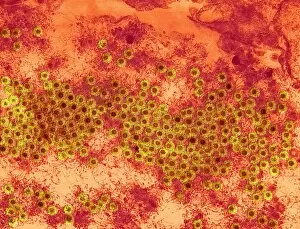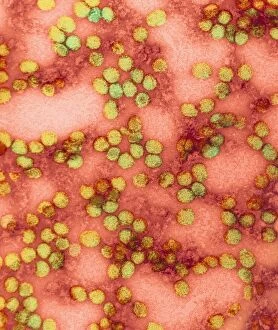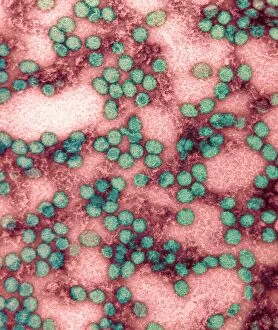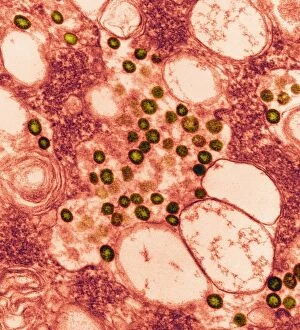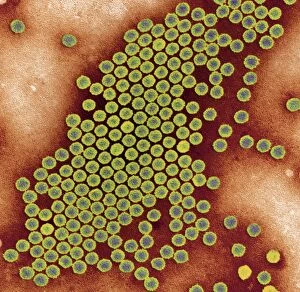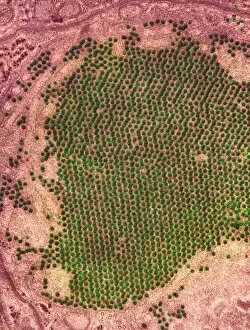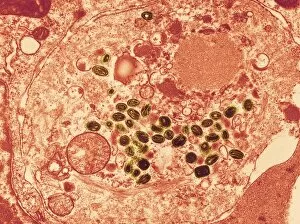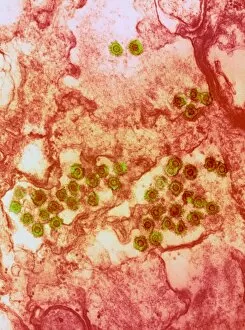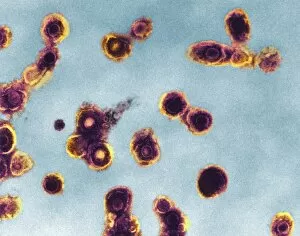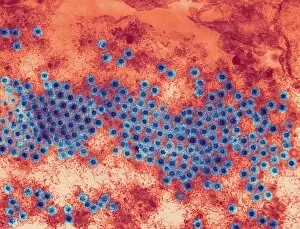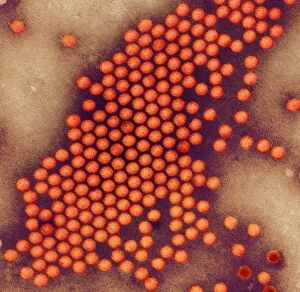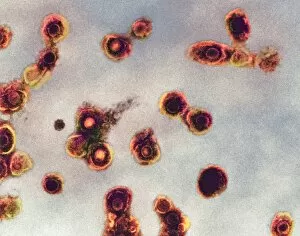Infantile Paralysis Collection
Infantile paralysis, also known as poliomyelitis, is a debilitating disease caused by the human poliovirus
For sale as Licensed Images
Choose your image, Select your licence and Download the media
Infantile paralysis, also known as poliomyelitis, is a debilitating disease caused by the human poliovirus. This virus belongs to the family of picornaviruses and can be visualized through molecular models like F006 / 9434 and F006 / 9289. The transmission of this highly contagious virus occurs primarily through fecal-oral route or respiratory droplets. Once inside the body, it targets the nervous system, specifically attacking motor neurons in the spinal cord and brainstem. Microscopic images captured using transmission electron microscopy (TEM) reveal various viral particles associated with similar diseases. Reovirus particles (TEM C016 / 9443), yellow fever virus particles (TEM C016 / 9468), St. Louis encephalitis virus particles (C016 / 9454), SARS virus particles (TEM C016 / 9445), smallpox virus particles (TEM C016 / 9447), spumavirus particles (TEM C016 / 9452), and varicella zoster virus particles (TEM C016/9466) are all examples that highlight different viruses affecting humans. Infantile paralysis manifests differently in individuals; some may experience mild flu-like symptoms or remain asymptomatic altogether. However, for others, it leads to muscle weakness or even complete paralysis. The severity depends on which part of the nervous system is affected. Fortunately, thanks to widespread vaccination efforts worldwide, cases have significantly decreased over time. Vaccines developed against poliovirus have been instrumental in preventing its spread and protecting vulnerable populations from this devastating disease. While infantile paralysis remains a concern in certain regions where vaccination coverage is low or inaccessible due to various reasons such as conflict or poverty, global initiatives continue to strive towards eradicating this disease completely. Understanding these viruses' structures at a microscopic level aids researchers in developing effective treatments and preventive measures.

